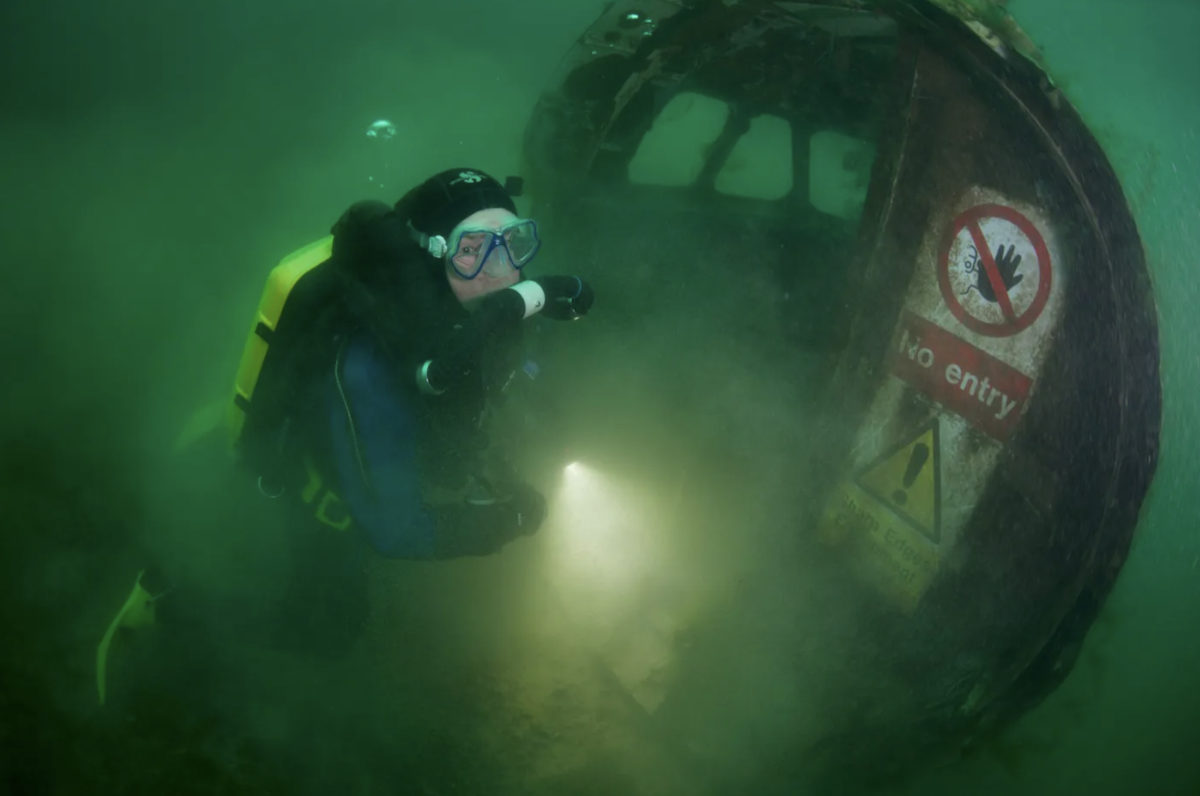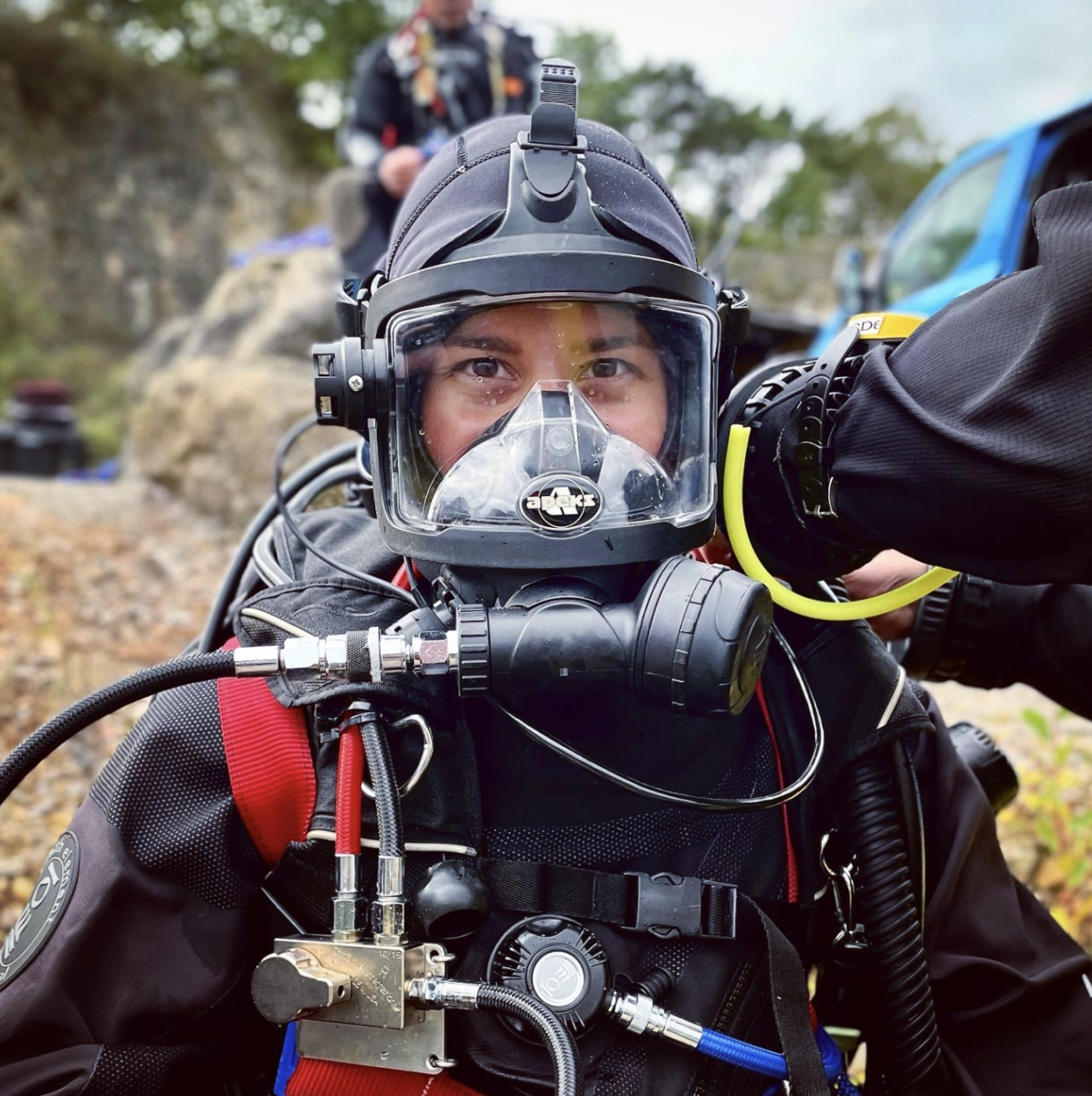On my quest to continuously “skill up” further, it was time for me to return to the UK after my adventures in Egypt. Swapping my 3mm wetsuit for my Fourth Element Argonaut Stealth Drysuit, I had the opportunity to spend the months from October until December in Bristol – the UKs hub for wildlife film-making and big production companies, such as the BBC, Silverback Productions and Offspring Films. That being said, my first stop was Cromhall Quarry, an inland dive site managed by the Southwest Maritime Academy. Aside from being a popular training site for dive training, it also happens to be a Site of Special Scientific Interest (SSSI) due to the presence of the well-protected Great Crested Newt, Triturus cristatus. My inner child couldn’t help but smile upon finding out that the site also hosts fossils from over thirty different species including reptiles, mammals and the Cromhall dinosaur (Agnosphitys cromhallensis).
With a love for the intersection of science and underwater photography with ocean exploration, I arrived at Cromhall Quarry for the HSE Class IV Commercial Diver course led by the one and only Neil Brock from Bristol Channel Diving. It is qualification required for underwater work in a professional capacity covering two key areas:
- Scientific and Archaeological Diving in support of scientific research and education, and archaeological investigation of sites of historic interest.
- Media Diving in support of film or TV productions which require divers to work as stunt performers, journalists, presenters, photographers, camera operators, sound and lighting technicians, and unit crew.
As part of an absolutely inspiring group of underwater camerawomen and men, underwater lighting technicians and scallop divers, I spent two weeks learning the “ins and outs” of diving for work. The course covered theoretical content, such as advanced diving physics and physiology, legislation applicable to ‘Diving at Work’ under the UK Health and Safety Executive, decompression and recompression theory (including dive tables), as well as project plans and risk assessment; and practical content including commercially orientated diver rescue procedures, compressor operations alternative air sources, gas switching blocks, underwater communication systems including lifeline signals, hard wire communications and wireless through water comms and construction underwater.
Using full face-masks and comms underwater was very exciting! Additionally, having a tender was a first for me! Dive tenders “tend” to the needs of commercial divers, helping them get into their equipment, conducting pre-dive safety checks and communicating with the dive supervisor – Tony . The diving supervisor on the other hand is the professional diving team member who is directly responsible for the diving operation’s safety and the management of any incidents or accidents that may occur during the operation. Our dives were not dictated by dive time or gas consumption, but rather by the supervisor’s decisions and the completion of underwater tasks we had been given.
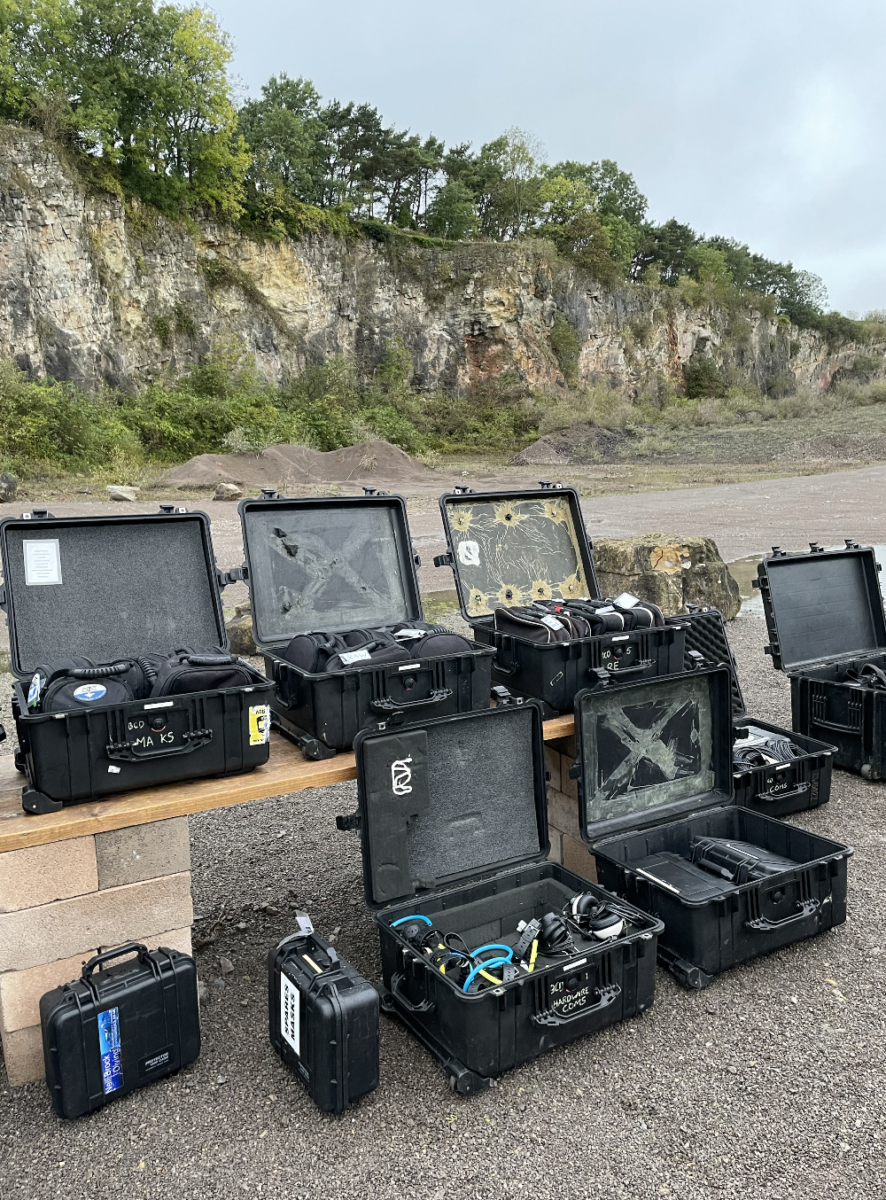
Comms equipment, dive kit and everything we need packed up in Peli cases. Photo by me. 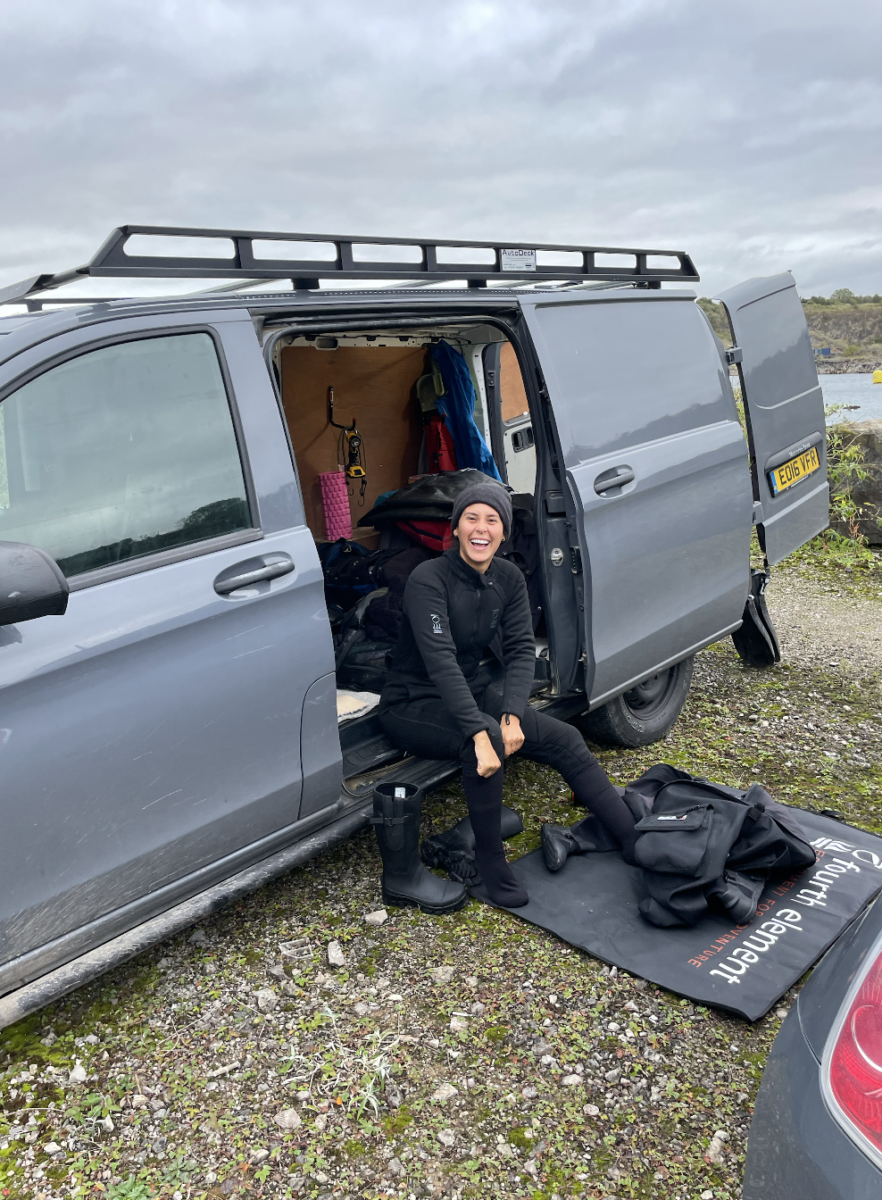
Getting into my drysuit and using my friend Martyn’s van as a mobile dive base! Photo by Martyn Williams. 
My full face mask for the duration of the course! Photo by me.
The commercial also included a visit to the Diving Diseases Research Center in Plymouth and a decompression chamber dive to 40m depth under supervision of world-leading hyperbaric medics. Being able to enter these amazing facilities and the work conducted in them was truly eye-opening (and in the case of our chamber dive, also giggle-inducing). Simply put, a hyperbaric chamber is a pressure vessel with hatches large enough for people to enter and exit, and a compressed breathing gas supply to raise the internal air pressure. With the higher air pressure, the vibration properties of the walls of the vocal cavities also change, resulting in what we all remember as a “funny voice”, certainly exacerbated by the effect of narcosis at 40m depth.

The chamber operation panel. 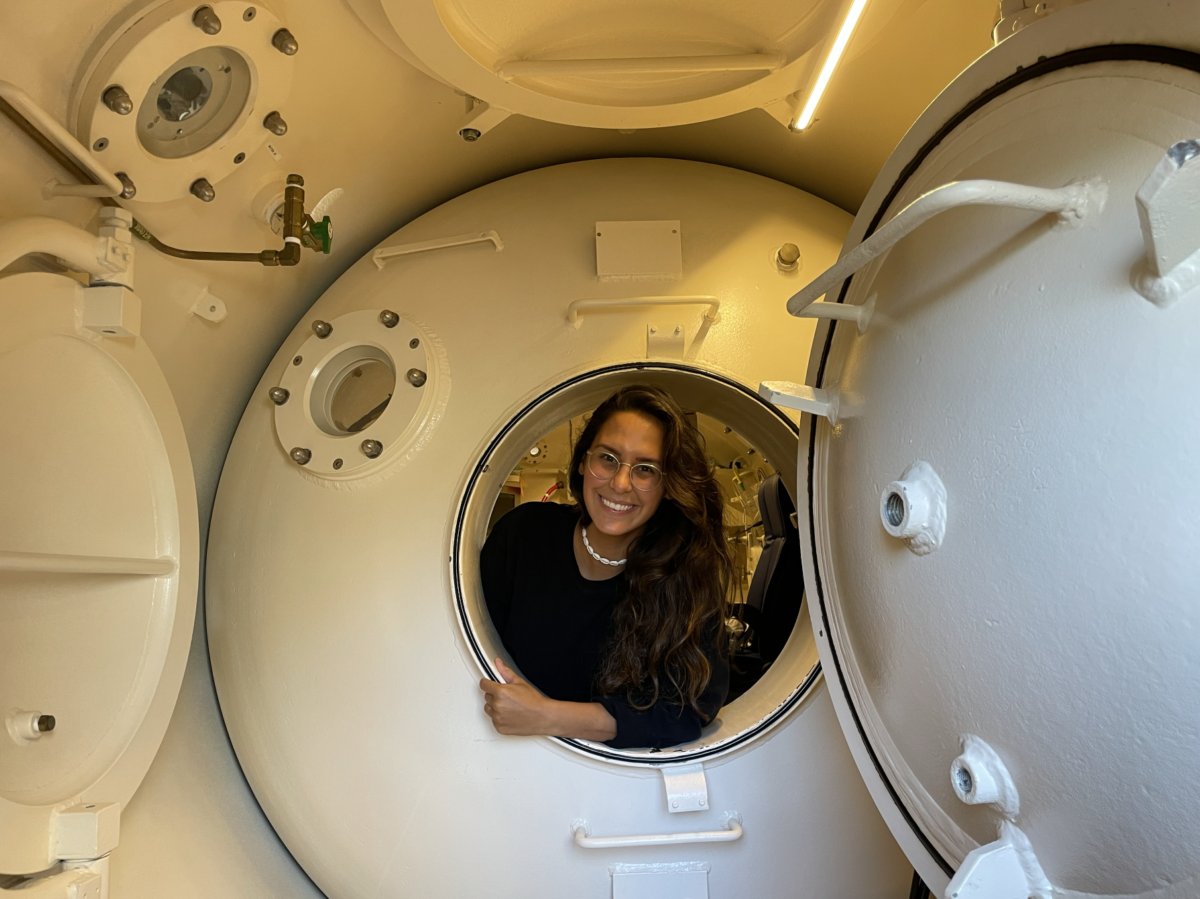
Happy inside the chamber! 
The HSE Commercial Dive Team just after their first 40m chamber dive! 
View of the chamber from above.
After our day on land, it was time for ocean dives to test our skills on the shipwrecks in Portland Harbour. A number of“wrecks lie both inside and immediately outside the breakwater walls of the harbour, including the Countess of Erne, a liner paddle steamer which was later converted to a coal hulk and sank in 1935, and the Enecuri, a 3000 ton Spanish steamship that dragged her anchor in a force 9 gale in December 1900 before eventually sinking. It was very rewarding to see how over the course of the two weeks, we not only got very comfortable with the additional equipment, but also internalized the dive safety and preparation protocols Neil and Tony taught us. Our last dive days marked a transformative step towards our qualification as commercial divers, putting our knowledge and learning into practice in the ocean. After wrapping up our dives in Portland, it was time to head back to Cromhall Quarry to take our final exam. And a few hours of answering questions, as well as several close inspections of the various US Navy dive tables later, we completed our course!

Tending my course mate David Palfrey and preparing him as well as his kit for the next dive. 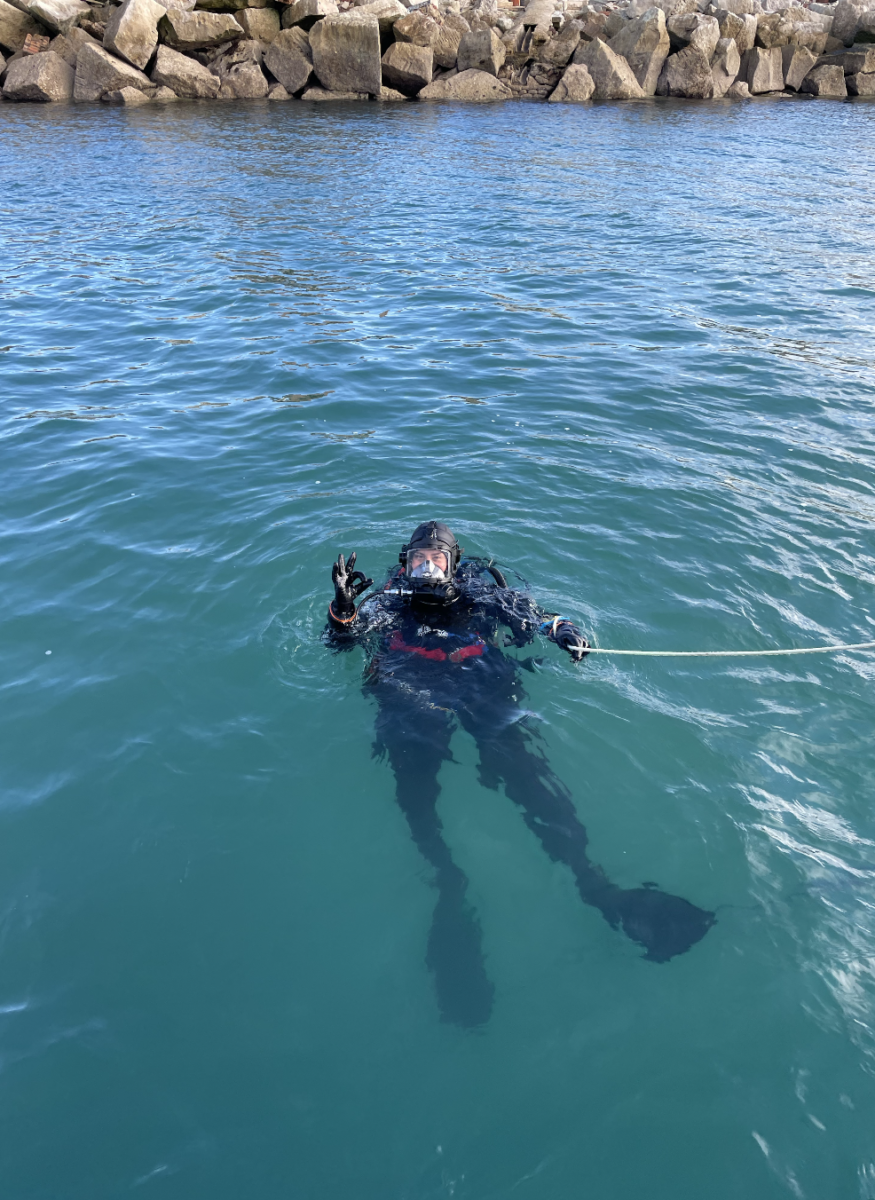
In the water and ready to-go and complete my tasks! 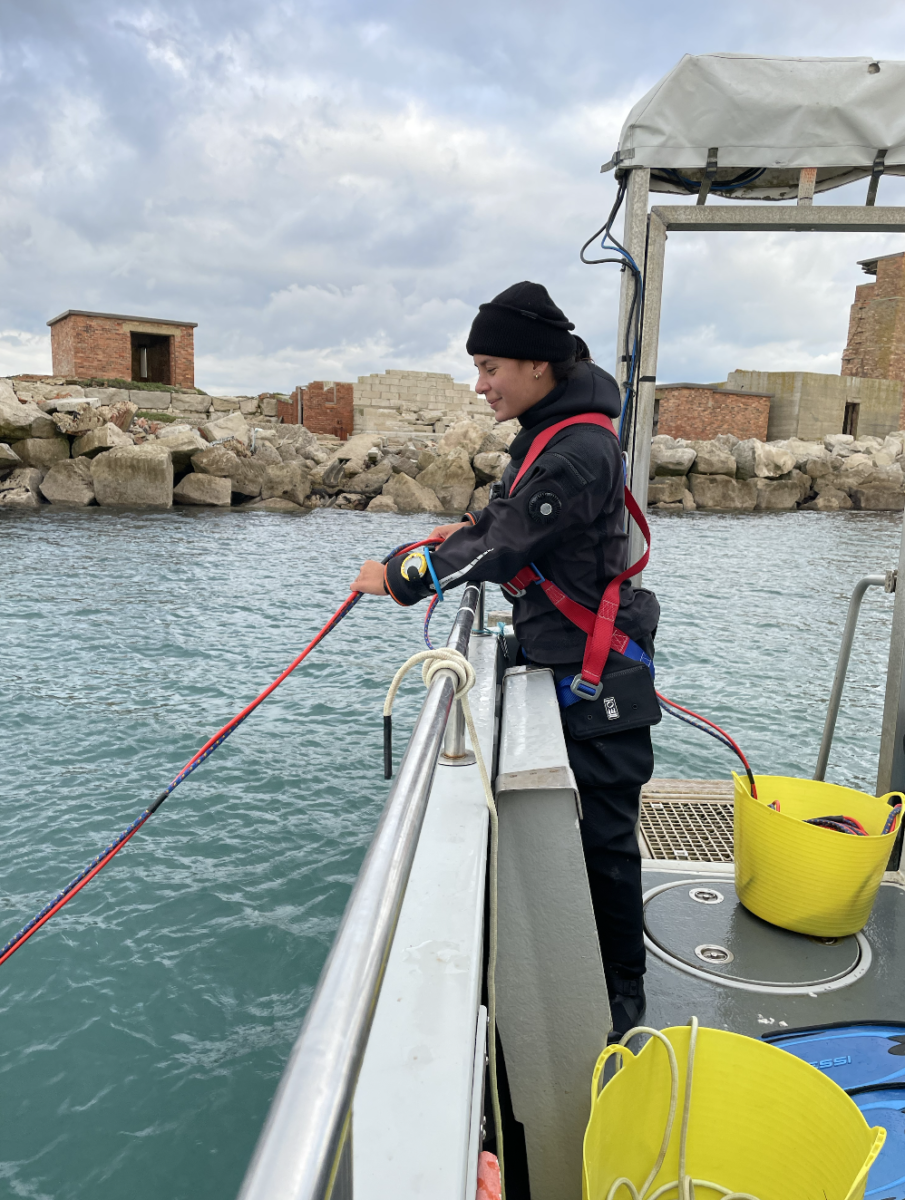
Tightly monitoring the lifeline and comms wire attached to “my” diver tight in order to avoid entanglement and ensure line signals can be transferred easily. Photo by David Palfrey.
With my eyes set on running my own specialised media and science operations in remote corners of the world in the future, gaining my certification as an HSE Class IV commercial diver represents a vital step for my career as a diver and underwater storyteller! I cannot wait to head off onto my first assignment as a commercial diver!
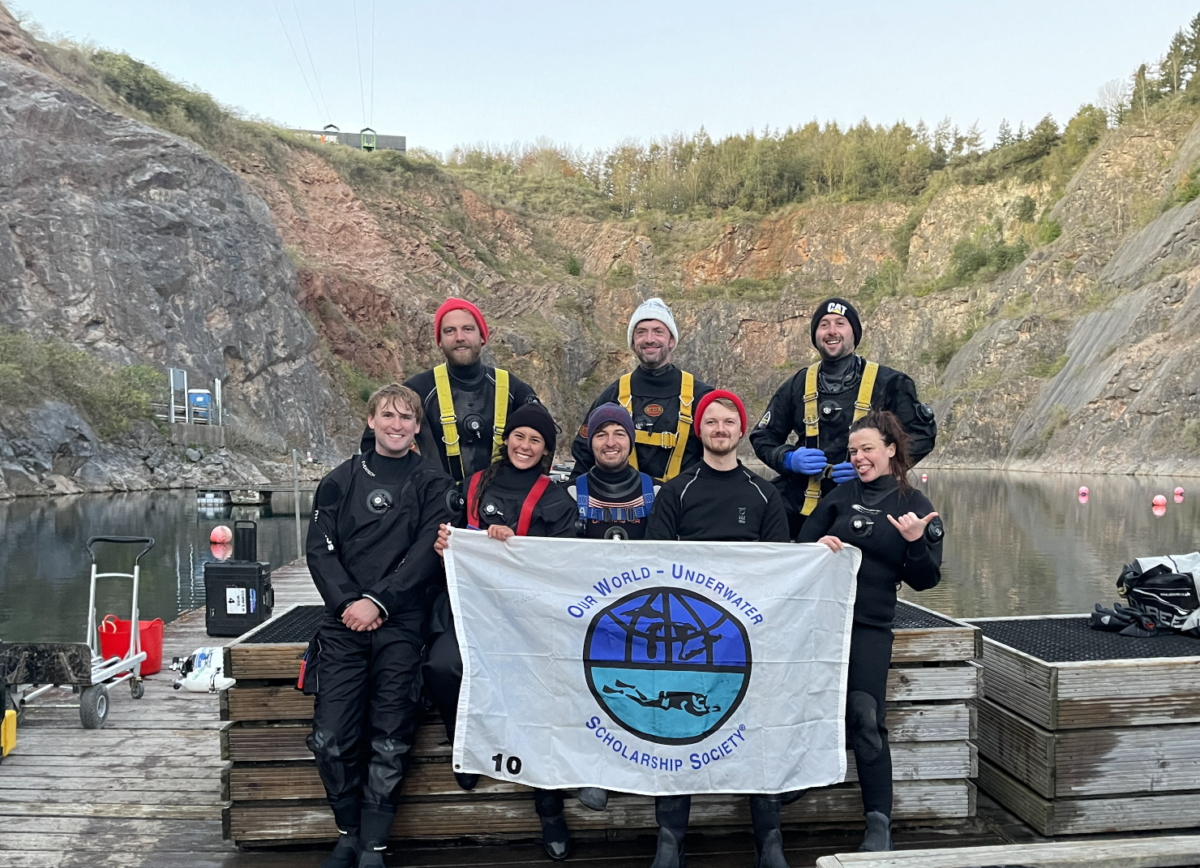
The HSE Commercial Dive Team at Cromhall Quarry. Photo by Neil Brock 
Neil Brock and our safety diver Tim Padfield from Bristol Channel Diving. Photo by David Palfrey
Thank you to the Our World Underwater Scholarship Society and Rolex for providing me with the opportunity to become a commercial diver and Bristol Channel Diving for the unforgettably insightful course. I also want to thank all the amazing sponsors for their generosity, particularly Fourth Element for the amazing Argonaut drysuit that kept me warm and toasty during our quarry dives. Having spent two weeks in commercial dive equipment that wasn’t my own, I am also excited to jump back into the amazing kit provided by Halcyon and Reel Diving as well as take my fantastic camera rig sponsored by Reef Photo and Video and Nauticam out on assignments with me.
